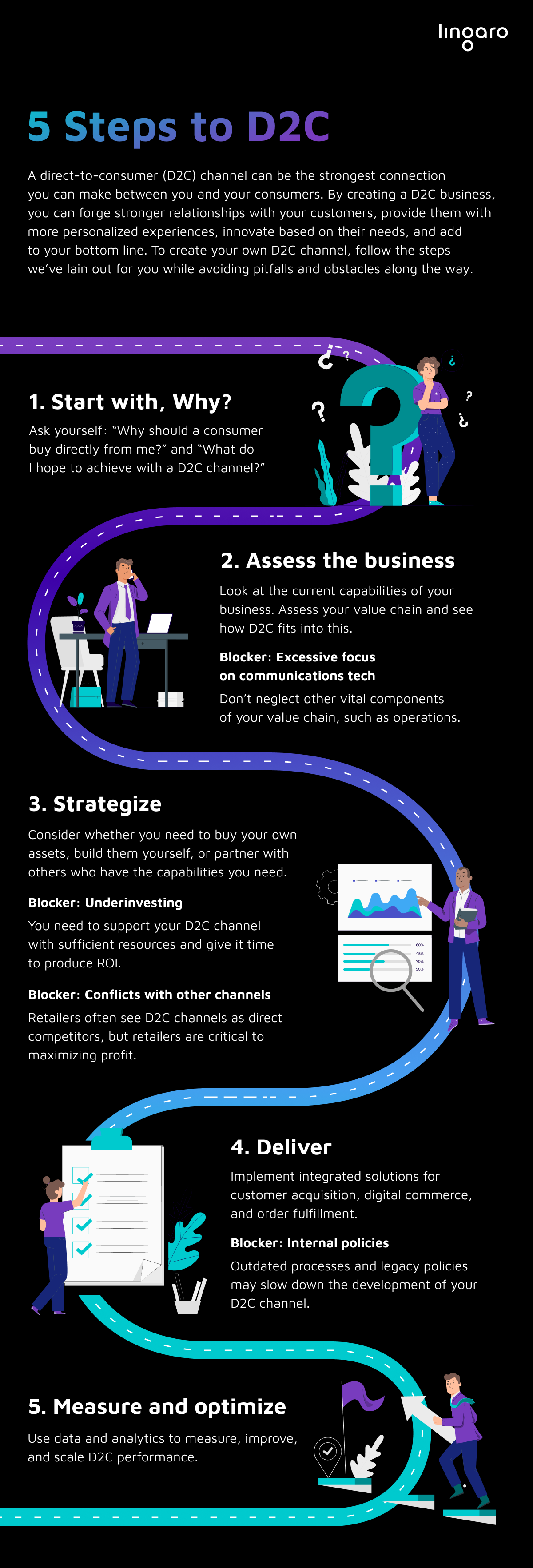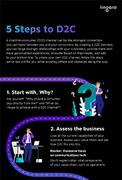With greater connectivity comes opportunities for building stronger and deeper relationships. For companies like yours, connectivity also enables you to create your own direct-to-consumer (D2C) business. A D2C platform gives you the ability to deliver value straight to consumers, reduce your reliance on intermediaries, and increase your margins. All of these are good reasons for going directly to consumers, but this raises the question: Why would consumers buy directly from you?
A common mistake people make when they think about D2C is that it’s just another term for e-commerce. While e-commerce is indeed an important component of D2C, the latter serves as an integrated platform, channel, or business that helps companies know their consumers more deeply and ultimately provide them with more value.
In other words, D2C is a platform for building relationships — ones that connects a business and its consumers more closely. However, would consumers like to relate with your company in that way? Let’s explore a few reasons why they’d want to do so.
Exclusive benefits and privileges
Membership, loyalty, and referral programs incentivize consumers to connect and strengthen their connection with your brand. For example, adidas offers member-exclusive gear to adiClub community members. Newsletter subscribers get to be the first to know about the latest offers and deals. Consumers who refer family and friends may be rewarded with discounts.
Unique brand experiences
In your D2C channel, consumers may get to experience your brand in a way that they can’t in other channels. For example, nowhere else but in M&M’s website can you order customized M&M’s to enjoy yourself or give as personalized gifts or party favors. Another example is Nike By You from Nike. Only in this section of Nike’s website can sneakerheads customize shoes by changing the color and/or material of structural components like the overlay, bootie, and outsole.

Pioneer product testing
There are consumers who love to be the first ones to try new products, so brands like Kellogg’s tap such consumers to get feedback on new items. Those consumers can proudly say that they contributed to the development and large-scale launch of those products, and they may become regular consumers and ambassadors of those items.
All of the perks, but at the same prices as retail
Who doesn’t like getting a better deal? For example, getting customized sneakers at the same price as the mass-produced version is a steal. Consumers will intuitively expect to have to pay more to get more, so seeing the same retail prices in your D2C channel can compel them to go directly to you. And since your D2C channel skips over middlemen like wholesalers and retailers, you get to increase your margins. When done correctly, D2C is a win-win for both you and your consumers.
To learn more on how companies can build a sustainable D2C business, download our white paper, “The Road to D2C: How To Pave a Closer Digital Path Toward Consumers.” The white paper shows the benefits, opportunities, and risks that D2C can bring, and shares real-life case studies of enterprises that have built their own D2C.










